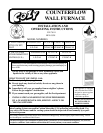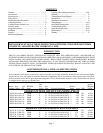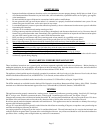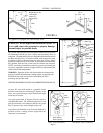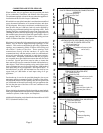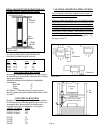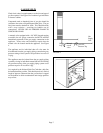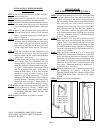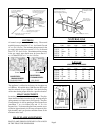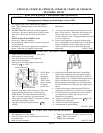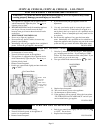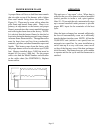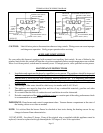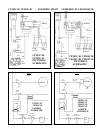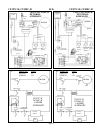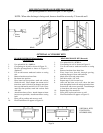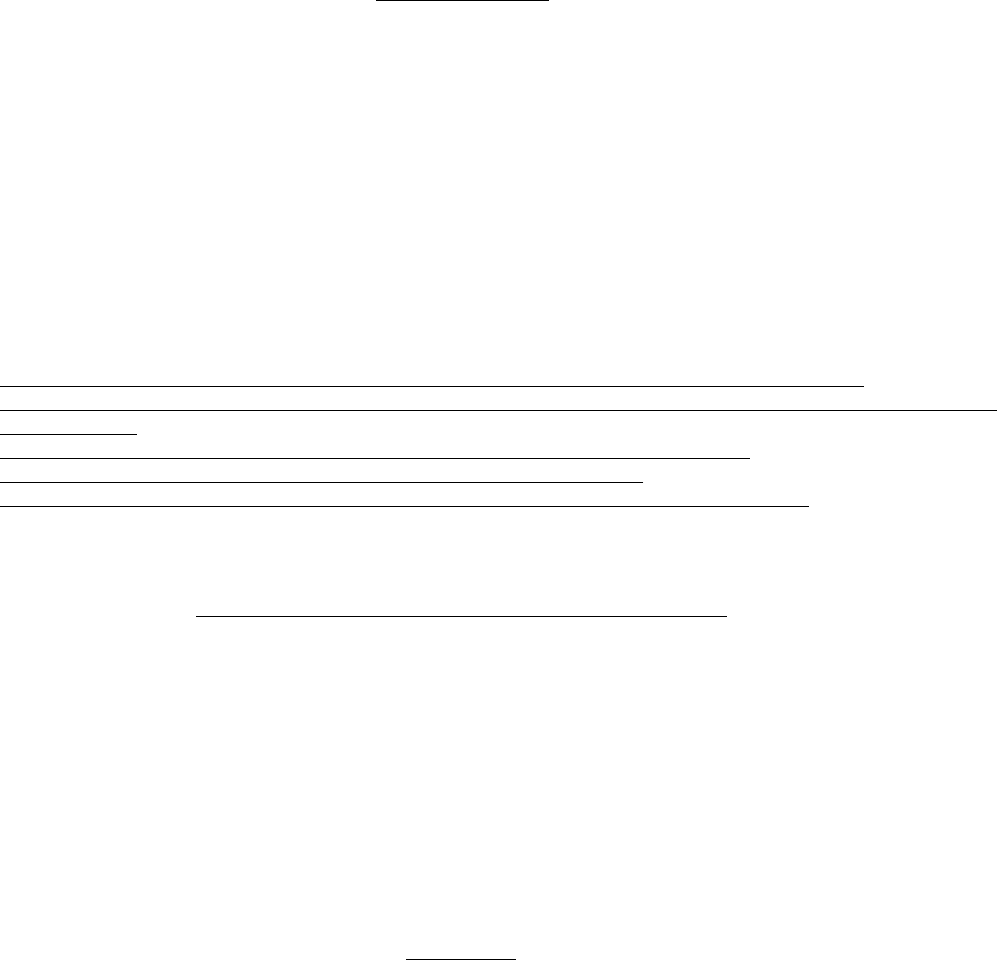
SAFETY RULES
1. Improper installation, adjustment, alteration, service or maintenance can cause property damage, bodily injury or death. If you
do not understand these instructions or your local codes, call local authorities, a qualified installer, service agency, gas supplier,
or the manufacturer.
2. Do not install this fan type wall furnace in a recreational vehicle trailer or mobile home.
3. Do not operate this fan type wall furnace unless it is connected to a properly installed and maintained vent system. Do not
exhaust flue gases into the room, wall or attic space for any reason.
4. Locate the thermostat in a room or space that cannot be separated by a door or other means from the room or space in which the
front outlet grill is installed.
5. Adequate air for combustion and venting must be provided.
6. If rising water may enter the wall furnace, turn off the gas immediately and disconnect the electric service. Do not use the wall
furnace if any part has been under water. Immediately call a qualified service technician to inspect the wall furnace and to replace
any part of the control system or any gas control which has been under water.
7. Have your fan type wall furnace and vent system inspected at least annually by a qualified service agency.
8. Before cleaning or servicing the wall furnace, turn off the gas and allow it to cool. This will prevent burns.
9. Due to high temperatures, the furnace should be located out of traffic and away from furniture and draperies.
10. Children and adults should be alerted to the hazards of high surface temperatures and should stay away to avoid burns or
clothing ignition.
11.
Young children should be carefully supervised when they are in the same room as the furnace.
12. Clothing or other flammable material should not be placed on or near the furnace.
13. Any safety screen guard or gill removed for servicing must be replaced prior to operating the furnace.
14. Locate the blocked flue switch and the auxiliary limit switch and push in the reset button. This will reset the switch in case it
accidentally opened during shipping.
READ CAREFULLY BEFORE INSTALLING UNIT
These installation instructions are a general guide, and do not supersede applicable local codes and ordinances. Before planning or
making the installation, be sure it complies with all phases of the local heating code. Or, in the absence of local codes, the latest edition of
the National Fuel Gas Code, ANSI.Z223.1. In Canada, see latest edition of CAN1-B149.
The appliance, when installed must be electrically grounded in accordance with local codes or, in the absence of local codes, the latest
edition of the National Electrical Code, ANSI/NFPA No. 70. In Canada, see latest edition of CSA C22.1.
The ANSI standards are available from the American Gas Association, 1515 Wilson Blvd., Arlington, Virginia 22209.
The NFPA standards are available from the National Fire Protection Association, Batterymarch Park, Quincy, MA. 02269. Canadian
standards are available from International Approval Services, 178 Rexdale Blvd., Etobicoke, Ontario, Canada M9W 1R3.
VENTING
This appliance must be properly connected to a venting system. Consult local ordinances governing venting. Install only UL listed type
BW 4” oval gas vent. When the vent enters the attic, a listed type B-1 round flue pipe may be used. See Figure 1, Page 4.
Vent pipe must connect to the wall furnace or header plate with a “B” vent base plate and terminate with a cap at a point at least 12 ft. above
the bottom of the wall furnace and two feet above any obstacle within a 10 foot radius and at least 3 foot above the roof.
Provisions must be made for adequate combustion and ventilation air. This appliance must not be connected to a chimney flue serving a
separate solid fuel burning appliance.
All type “B” vents shall extend in a generally vertical direction with offsets not exceeding 45 degrees, except that a vent system having not
more than one 60 degree offset may be allowed.
Any angle greater than 45 degrees from the vertical is considered horizontal. The total horizontal run of a vent plus the horizontal vent
connector shall be not greater than 75 percent of the vertical height of the vent. Any offsets used should be as far above the drafthood as
possible to allow a venting action to begin before any restriction is encountered.
Page 3



